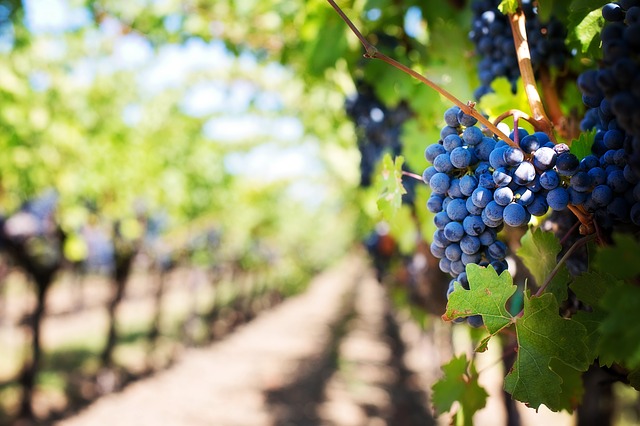Posted: Jun 05, 2017

What is the most important tool in wine? A pair of clippers? A wine opener? Try a calculator.
Wine is, when all is said and done, a business based on turning soil, sun and plants into profits. Don't consider the numbers and your wine venture can add up to, well, zero.
There are winemakers who are artists and there are growers who are all about farming and the land. But the foundation for both is the ability to make a profit. From the vineyard to the end consumer in a wine shop, or someone who buys a glass in a restaurant, the name of the game is making the numbers work.
KEEPING COUNT
Let's start with a bottle of wine and work backward. A full bottle contains 750 milliliters of wine. That works out to one-fifth of a gallon, or a little more than 25 ounces. Who cares? Well, start with a restaurant or bar that is selling premium wines by the glass.
The average pour, or the amount of wine in a glass in a bar, is right around 5 ounces. If the bottle cost the bar say $20 wholesale, and they are charging you $10, a reasonable price for a premium pour (likely more at that bottle price), then they are making $50 on that bottle, or two and a half times more than they paid for it. The numbers start to add up.
You know that there are a dozen bottles in a case, right? This is important because wine is sold by the case to retail establishments and usually when you purchase a case at your local wine shop you will get a 10-15 percent discount.
BARREL BUCKS
So, how many cases of wine can come from a single barrel of wine? Keep in mind that most premium wines spend time in barrels. Some in old or used barrels, some in new barrels. Some stay a short time in barrels, while other wines may be stored anywhere from 18 months to as long as four years, as is the case with some wines in Italy's Piedmont region. A single barrel can hold 25 cases of wine. That's 300 bottles, or about 60 gallons of wine.
But before wine can be put in a barrel it has to be grown in a vineyard. How much land, how many vines and how many grapes does it take to make a bottle, or a case of wine?
A FOOTBALL FIELD OF VINES
In this country, the standard mode of measurement for a vineyard is the acre. An acre is just shy of 44,000 square feet, or about 10 percent smaller than a football field. In other parts of the world the measurement used is the hectare, which is equal to about 2 1/2 acres. We'll use the acre because, well, we're in the U.S.
An acre of land can, based upon the variety of the grapes, the way they are trellised and the desire for a level of quality, host anywhere from 500 vines on the low end to as many as 1,300 vines. The total number depends on the spacing between the rows and the vines themselves. This can be where things get tricky, as the right brain (the creative side) may want to increase quality, while the left-brain (the analytical side) may want to increase yields.
Each vine has approximately 40 clusters of grapes depending upon the techniques used by the grower, and each cluster will have between 75-100 grapes.
OK, so that means there are on average about 3,500 grapes per vine. The weight of those grapes is about 10 pounds. A high-end winery will usually shoot for somewhere between 2 and 4 tons of grapes yielded per acre. Using our model, that means to yield 4 tons of grapes you need about 800 vines.
So how much wine does 4 tons of grapes produce? Well, again on average, a ton of grapes will crush down to 120 gallons of wine. Multiply that by 4 tons and you get 480 gallons of wine.
Still with me? Remember, a barrel can hold 60 gallons of wine. So 480 gallons would fill eight barrels. Again, remember, a barrel produces 25 cases and there are 12 bottles in a case. So if you multiply eight barrels times 25 cases times 12 bottles, then you get 2,400 bottles of wine on your planted acre.
That's a lot of digits to be sure, but you can bet that any successful grape grower has done that math, usually in their head in bed, many times for every acre they have ever planted.
By Kelly J. Hayes
June 3, 2017
Source: tahoedailytribune.com
Go-Wine's mission is to organize food and beverage information and make it universally accessible and beneficial. These are the benefits of sharing your article in Go-Wine.com


The Wine Thief Bistro & Specialty Wines is a locally owned small business in downtown Frankfort, IL offering world class wines in a relaxed, casual gathering spot for friends and family. Offering world class virtual tastings and touchless carryout.
https://www.twtwineclub.com/aboutus
Go-Wine 25 Great Wineries in US selection prioritizes quality, value and availability.
www.go-wine.com/great-wineries-in-america
Tasting wine is a nice experience, but visiting the places in which wine is made is a magic moment. Available in New York City for touchless pickup.